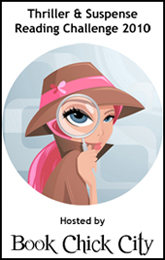|

|
|
Hardcover: 768 pages
Publisher: Simon & Schuster (October 1, 1995)
Language: English
ISBN-10: 0671642405
ISBN-13: 978-0684804484
|
Order from here:
|
|
|
| |
| |
| |
Franklin Roosevelt was the only president in history to have served 4 terms. This book, by Drois Kearns Goodwin covers the lives of both Franklin and Eleanor, mostly from 1939-1945. America was just recovering from the Depression. Roosevelt was often and still is criticized for many of his programs.
During his administration, African Americans were first fully allowed into the military. Up until this point, they were allowed in, but had the jobs of cooks, cleaning, laundry, etc. All amenities were separate. African Americans had separate quarters, separate mess halls, separate entertainment facilities, and some of these were often subpar. They were not allowed in most workplaces, except as janitors, and other menial tasks. At one point, it was ordered that African Americans be given the same rights to test for Conductor jobs on train lines in San Francisco. When 10 African Americans scored high enough on the test for the jobs, the old union decided to go out on strike. Federal employees were sent in to run the lines. Eventually with unions, strikers were told they could go to work, or they could go to war. Most chose to return to work.
Women, because of the war, began to move into the workplace. While men didn’t like it at the time, it was necessary to turn out all the materials required. Women actually began to find they liked being in the workplace, and although men expected them to return to being housewives at the end of the war, many didn’t.
There were also many mistakes made by the FDR administration. The Japanese Internment is the one known most often. Many bright, patriotic Japanse Americans were interned in camps. These Americans were doctors, lawyers, teachers, and many would’ve been willing soldiers. However, the paranoia led people to think they’d probably side with Japan. Eleanor Roosevelt observed that they made the best of the situation however, they built libraries, schools, etc. and continued on with their lives.
Another mistake was in turning back the St. Louis. The St. Louis set sail from Germany with 1,000 Jewish passengers headed to Cuba. Some of these passengers had been released from concentration camps in Germany. Cuba wouldn’t allow them to land without being paid $500 per person. With the U.S. not being able to meet an agreement with Cuba, the ship was turned around and returned to Germany.
This was not the only instance of this. At one point Eleanor had tried to get German/Jewish immigrants admitted into the U.S. FDR and members of his administration refused, under the belief that they couldn’t tell a German Nazi from a German Jew. Some Historians, not necessarily Ms. Goodwin, claim that if the U.S. and other countries had opened their policies, that the Holocaust may have never existed. The idea being that Hitler wanted to rid Germany of the Jewish population, whether it be death or sending somewhere else I don’t believe though, that he would’ve stopped there. He would’ve just came after us for harboring them.
A lot of this book concentrates on the relationship between Eleanor and Franklin as well. After his affair with Lucy Mercer, they never had a tight husband/wife relationship. From reading the book, I think part of it might have been latent feelings that Eleanor had towards other women. The author doesn’t seem to hide the fact that Eleanor had many lesbian friends, some of whom she considered to have a “marriage”. At times it seemed to suggest that she also had these relationships.
Eleanor had to deal with her feelings, the pain of Franklins affair, and his overbearing mother. It seems at times that she was shut completely out of his life. Sending her out to talk to people, being his eyes and ears, seemed to give her some feeling of importance.
Franklin had his own affairs of the heart. One such was with Missy Lehand. Missy was his aid, and acted as his right hand. She took interests in a lot of his hobbies that Eleanor had no desire to learn about. She was such a close part of their lives, that Franklin even had his will modified to give Missy a third of his Estate.
I saw many parallels though between FDR’s administration, and current events. There was a lot of talk about FDR’s Administration being Socialist. There was also a parallel between the African Americans in the military, and the current debate regarding Don’t Ask, Don’t Tell. Reading this book, I could see many ways in which it seemed like we were repeating the history of the 1940’s. I also saw many ways in which we handled things differently, for instance, the war, rationing, construction, then we have in recent war time situations.
This book was awarded the Pulitzer Prize in history for 1995. In addition it won the Harold Washington Literary Award, the New England Bookseller Association Award, and the Ambassador Book Award. It also spent 6 months on the New York Times bestseller list.
I’d highly recommend this book for anyone interested in reading about how a lot of the things (Civil Rights, Womens Rights, etc.) got their beginnings. It was very insightful look into the lives of two of the most recognized Americans of the 20th century, and Ms. Kearns manages to present the stories of both of them, without glossing over the bad, and only showing the good.
You can discuss it here







 Like
Like


